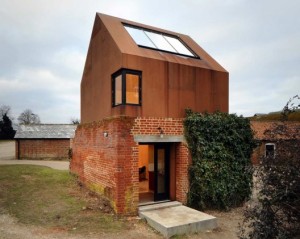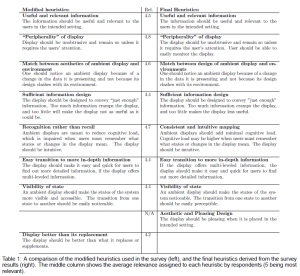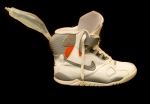I’ve been spending a lot of time on the saddle this summer, and figure it’s about time I should write a bit here. After about 2 months of pretty good road volume, (more on this in a post to follow) I felt like I finally got a good base. At about this time the Indiana Summer heat ran me off the road and into the woods.
Gear stuff
I’m still riding the same bike as shown in my ’12 bike check post with a few changes. The first change was tires. I had been running Specialized Fast Track LK tires front and rear. After my first couple of weeks of riding this year, I started to rethink my whole tire situation. I’ve been running tubeless for a while, but still running pretty high pressure – around 50 psi. (about 10 over what stans recommends for these rims) I figured that since I’m over 200 lbs, and my riding style is a lot more BMX like than most cross country / trail riders, it made sense.. but ultimately it was stupid. I could drag my rear tire through fast corners easily, but I had an upper speed limit in the same turns because my front tire would slide. I’ve since put an S-Works “The Captain” in 2.2″ on the front and dropped pressures to 30psi rear and 25 psi front. The rear is still really high, and I am encountering problems with wet/muddy climbs. I figure it’s about 50% tire and 50% body positioning. Still, everything is working a lot better.
After experiencing some real traction from the front tire, I’ve been able to come into turns hotter and lean through them, which has led me to make some cockpit adjustments. Previously I had no drop. Bars were actually higher than saddle. I grabbed a used RaceLite stem from the shop that is a less aggressive angle, and also went to a flat bar – We had a FSA SL-K at the shop for a relatively inexpensive price so I put it on. (only to later find out that it is a carbon wrapped aluminum bar and not actual carbon) I’m going to gradually lower and ultimately flip the stem. So far it’s working out, with the exception of the new bars being too wide. I hit too many trees, so I cut them down to 620mm.
I’ve also added a front brake (yep, I used to do rear only) and put my old Specialized Toupe saddle on. The saddle has been pretty great with the exception of the pointy plastic things on the back, and the front brake has been hit or miss. Sometimes I really appreciate it, and other times it makes me wreck. Speaking of wrecks, I’ve gotten pretty awesome at falling. Somehow, I only fall to the right side, so my right knee has taken quite a beating. Apparently I have enough muscle mass at this point to take the hits, because I’m not having any problems past skin abrasions.
I’m still in gear head mode. Currently waiting on some new grips. I ordered a pair of Ergon GS-2’s and also a pair of their GE1’s. I still have the XO grip shift, and while I love it’s function, the shifter is huge, and is giving me a hassle as far as grip/lever location. I’ve also got some Shimano XTR skewers on the way. It may sound like a stupid thing to spend money on, but I recently noticed that both my road and mountain bikes have been having issues with the (probably DT swiss) skewers that came with my stan’s wheelsets. They just aren’t staying in the dropouts. The popular internet opinion is that Shimano or Campy are the best for skewers if you’re not being a weight weenie, so we’ll see how this goes.
Races
So far I’ve only done two mountain bike races. I raced Intro class at Muscatatuck State Park a few weeks ago and got first, and just raced Clydesdale at Versailles this past weekend and got third. There are two more races in the DINO series, and I hope to hit them both.
I’m definitely not fast by any means, and I’m sure that if I was doing Cat3 I’d be at the very bottom of the pack, but I feel pretty strong compared to my past fitness levels. Weight is still an issue, and climbing sucks, but I can do it. I do better on dry trails because I can stand up and climb as you would on a single speed; wet trails I’m just burning out. My handling has been steadily improving, and I’m having a lot of fun on flowy stuff. I can tell I’ve got a lot more control over the bike as well as the strength to really push it around. There’s room for improvement though. I suck at tight turns. I usually come in too hot, or can’t force the wheel to turn as tight as I need it to go.




































